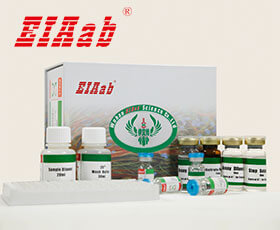Camsap3 (基因名), Calmodulin-regulated spectrin-associated protein 3 (蛋白名), camp3_mouse.
产品名称:
Mouse Camsap3/ Calmodulin-regulated spectrin-associated protein 3 CLIA Kit
货号:
-
商标:
EIAab®
监管等级:
别名:
Marshalin, Protein Nezha, Kiaa1543
检测方法:
CLIA
特异性:
Natural and recombinant mouse Calmodulin-regulated spectrin-associated protein 3
样品类型:
Serum, plasma, tissue homogenates, cell culture supernates and other biological fluids
样品数据:
登录.
研究领域:
-
通用注释
亚单元:
Interacts with PLEKHA7 (By similarity). Interacts with CAMSAP2 (PubMed:23169647). Interacts with KATNA1 and KATNB1; leading to regulate the length of CAMSAP3-decorated microtubule stretches (By similarity). Interacts with AKAP9; regulating Golgi assembly in epithelial cells (By similarity). Interacts with MACF1 (By similarity). Interacts with isoform C of CDH23; leading to inhibit CAMSAP3 ability to induce microtubule bundle formation (PubMed:27349180). Interacts with AKNA (PubMed:30787442).
功能:
Key microtubule-organizing protein that specifically binds the minus-end of non-centrosomal microtubules and regulates their dynamics and organization (PubMed:23169647, PubMed:24706919, PubMed:26715742). Specifically recognizes growing microtubule minus-ends and autonomously decorates and stabilizes microtubule lattice formed by microtubule minus-end polymerization (PubMed:24706919). Acts on free microtubule minus-ends that are not capped by microtubule-nucleating proteins or other factors and protects microtubule minus-ends from depolymerization (PubMed:24706919). In addition, it also reduces the velocity of microtubule polymerization (PubMed:24706919). Required for the biogenesis and the maintenance of zonula adherens by anchoring the minus-end of microtubules to zonula adherens and by recruiting the kinesin KIFC3 to those junctional sites (By similarity). Required for orienting the apical-to-basal polarity of microtubules in epithelial cells: acts by tethering non-centrosomal microtubules to the apical cortex, leading to their longitudinal orientation (PubMed:26715742). Plays a key role in early embryos, which lack centrosomes: accumulates at the microtubule bridges that connect pairs of cells and enables the formation of a non-centrosomal microtubule-organizing center that directs intracellular transport in the early embryo (PubMed:28860385). Couples non-centrosomal microtubules with actin: interaction with MACF1 at the minus ends of non-centrosomal microtubules, tethers the microtubules to actin filaments, regulating focal adhesion size and cell migration (By similarity). Plays a key role in the generation of non-centrosomal microtubules by accumulating in the pericentrosomal region and cooperating with KATNA1 to release non-centrosomal microtubules from the centrosome (By similarity). Through the microtubule cytoskeleton, also regulates the organization of cellular organelles including the Golgi and the early endosomes (By similarity). Through the microtubule cytoskeleton, also regulates the organization of cellular organelles including the Golgi and the early endosomes (By similarity). Through interaction with AKAP9, involved in translocation of Golgi vesicles in epithelial cells, where microtubules are mainly non-centrosomal (By similarity).
亚细胞位置:
Cytoplasm
Cytoskeleton
Cell junction
Adherens junction
Cytoplasm
Scattered in the cytoplasm, associated with the minus-end of microtubules and also detected at the centrosomes (PubMed:24706919, PubMed:26715742). Decorates the minus-end of microtubules by decreasing the rate of tubulin incorporation and remaining bound (By similarity). Localizes along zonula adherens only at mature cell-cell contacts (By similarity). In early embryos, accumulates at the microtubule bridges that connect pairs of cells: this structure is present in early embryos, which lack centrosomes (PubMed:28860385). This cytokinetic bridge does not undergo stereotypical abscission after cell division (PubMed:28860385). Accumulates to the pericentrosomal region following interaction with KATNA1 (By similarity).
数据库链接
您可能感兴趣
该产品尚未在任何出版物中被引用。
反馈墙
评论数 : 0
所有用户
所有用户
默认排序
默认排序
最近
早期
目前还没有评论。






通知
规格
数量
单价 (¥)
小计 1 (¥)
小计 2:
¥

规格
数量
单价 (¥)



 验证序列:
验证序列:




 折扣:
折扣: